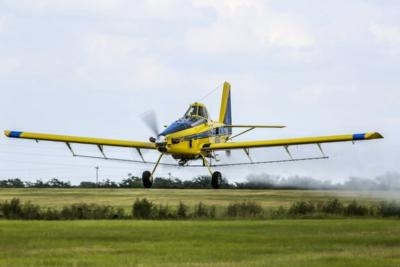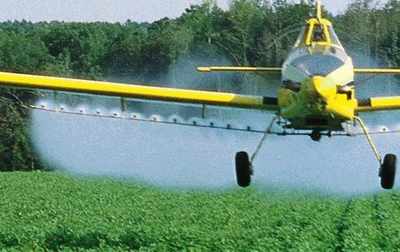Down—On the Farm
The NTSB has released its final report on a 25 July 2020 accident in which the pilot of an Air Tractor AT502, registration N502KJ, operating in an agricultural application capacity under Part 137 of the Federal Aviation Regulations lost his life in the vicinity of Grant, Nebraska.

GPS track data indicated that as the accident flight progressed, the frequency of spray passes increased, the elapsed time between spray passes decreased, and the maximum altitude to which the AT502 climbed between spray passes increased. During the flight’s final five minutes, the AT502’s ground-speed averaged 141-knots during spray passes and 97-knots while in the climbing left turns the pilot executed between such—during which, he climbed the aircraft to an average altitude of 485-feet.
An agricultural pilot spraying a nearby field at the time of the accident reported he maintained radio contact with the accident pilot throughout most of the accident flight and observed the accident airplane repeatedly climb to an altitude between 450 and 500-feet following each spray pass.
The witness pilot stated the accident aircraft’s climbs were higher than required for aerial application and reported seeing the accident airplane climb over the field following a spray pass before rolling right-wing-down into a 90° to 100° bank with a 10° to 12° nose-up pitch attitude. The accident airplane then pitched down, consistent with a lazy-eight maneuver.
The witness pilot lost sight of the accident airplane as he turned his own aircraft following a spray pass. The AT502’s final recorded ground-speed and estimated altitude above ground level were 132-knots and 136-feet respectively. The accident aircraft’s final descent and impact with the ground were not witnessed.
The accident pilot had been previously confronted about his “aggressive” flying techniques. The chief pilot of the certificate-holder for which accident pilot flew had counseled the latter, in part, about his propensity for utilizing the hammerhead flight maneuver to execute turns between spray passes. The AT502 Aircraft Flight Manual (AFM) states abrupt pull-ups should be avoided for purpose of maintaining adequate airspeed during turns between spray passes. The AFM states a maximum altitude loss of 220-feet is expected during recovery from wings-level aerodynamic stalls at an aircraft gross weight of 8,000-pounds; however, an aerodynamic stall during an uncoordinated turn will result in a sharp decrease in airplane pitch and a significant loss of altitude
The AT502’s wreckage was found upright in a cornfield with significant impact damage to the forward fuselage and the leading edges of both wings. No discernable ground impacts or debris path was observed preceding the wreckage. Post-accident examination revealed no evidence of preexisting mechanical malfunction or failure by which normal operation of the aircraft would have been precluded. The lack of a debris path and an estimated 45° nose-down flightpath angle at impact are consistent with an unsuccessful attempted recovery from an aerodynamic stall at low altitude.

The pilot’s postmortem toxicological testing detected ethanol in all tested specimen types. However, the differences between the ethanol levels in the various specimens were greater than is typically seen after ethanol consumption alone and suggest that at least some of the detected ethanol was likely from sources other than ingestion. While it is likely that at least some of the ethanol detected in the pilot’s specimens was from postmortem production, the possibility that the pilot may also have consumed ethanol is not excluded by the toxicology results. However, there is no clear operational evidence that the pilot was impaired. Given the high-risk nature of spraying operations and a pilot known to fly aggressively, positing impairment is not necessary to plausibly explain the accident circumstances. Ergo, whether ethanol effects contributed to the accident cannot be determined, and is of nominal consequence.
The National Transportation Safety Board ascribed the accident primarily to the pilot’s exceedance of the AT502’s critical angle of attack while maneuvering during an agricultural flight, thereby occasioning an aerodynamic stall and loss of aircraft control at an altitude insufficient for recovery. The NTSB cited the pilot’s non-standard climb technique as the accident’s secondary cause.
 ANN's Daily Aero-Term (04.28.24): Airport Marking Aids
ANN's Daily Aero-Term (04.28.24): Airport Marking Aids Aero-News: Quote of the Day (04.28.24)
Aero-News: Quote of the Day (04.28.24) ANN's Daily Aero-Linx (04.28.24)
ANN's Daily Aero-Linx (04.28.24) Aero-News: Quote of the Day (04.29.24)
Aero-News: Quote of the Day (04.29.24) ANN's Daily Aero-Linx (04.29.24)
ANN's Daily Aero-Linx (04.29.24)




